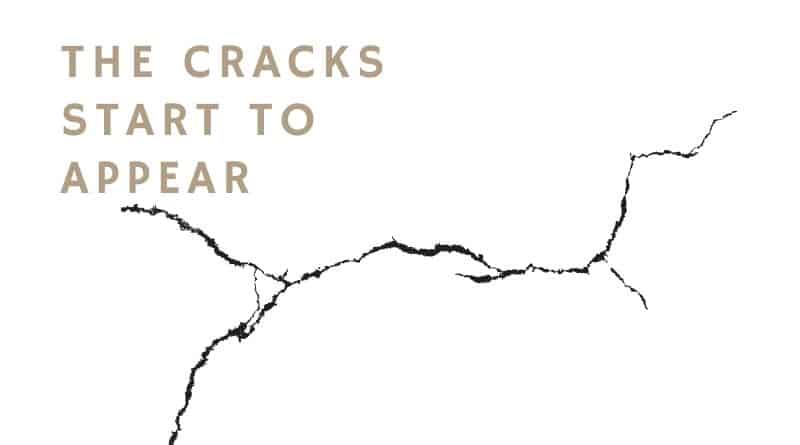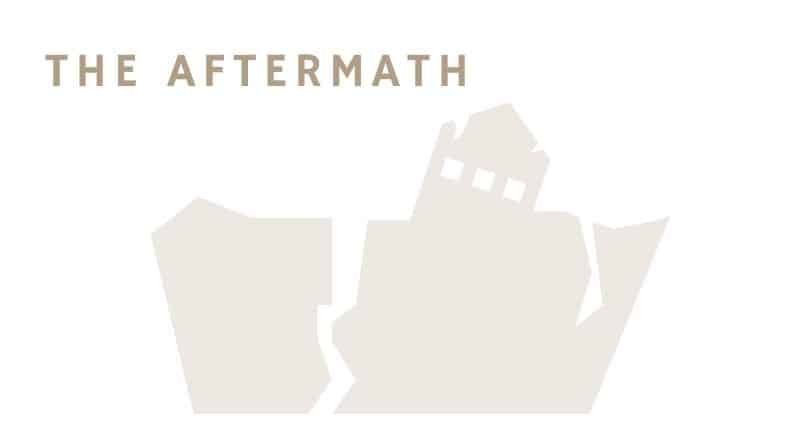Why did The Beatles Break Up? While Paul McCartney’s infamous press release on April 9th 1970 is usually cited as the official end of The Beatles, in truth it had been a long-time coming. While many fans want to lay the blame solely at the feet of Yoko Ono, the cracks had already appeared years before she was accused of interfering in band affairs. And yet, it still came as a shock when McCartney gave his one-word response to the question of whether The Beatles were planning any new songs or albums; “No.”
With that simple and tragically unambiguous reply, the most important band that had ever and would ever exist, was finished. They had lasted only eight years, which seems amazing now when you consider their great rivals, The Rolling Stones, have now been together for sixty. In that time, they had revolutionised music, and for the millions of fans across the world, the breakup hit like a death in the family.
The Beatles had transcended music, so it wasn’t just fans of their music that mourned the loss, it was a whole generation. The sixties and early seventies were decades of enormous upheaval and change, with young people expecting more than the generations before them, asking questions of their government, and looking to create a more peaceful world. All to a soundtrack of the Beatles’ greatest hits.
What ended The Beatles? The Cracks Start to Appear

In reality, every one of the Fab Four had quit the band at various times during the four years leading up to McCartney’s infamous press release. George Harrison was first in 1966, when he said that he would only stay if The Beatles no longer toured. Harrison had grown tired of the chaos of their live performances, with The Beatles constantly drowned out by the screaming fans. McCartney wasn’t sure it was the right move, but finally acquiesced, while Lennon recognised it was a sign that things were coming to an end, and he started to consider what he would do next.
Harrison wasn’t alone in harbouring resentments, however, with every member of the band having their own perceived grievances. Many of these came as a result of their 1967 album, the much lauded Sgt Pepper’s Lonely Hearts Club Band. While the album was a massive success, it was predominantly McCartney’s idea, and so he started to become more authoritative, pushing the band to go in the direction he wanted. Previous to that, the group had always been relatively democratic, so McCartney’s self-appointed role as leader did not go down well.
George Harrison, who had long been feeling like his input was underappreciated, felt particularly aggrieved. He felt like he had really found his feet as a songwriter, a view that was clearly shared by the fans given the positive response to his three songs on the album Revolver the previous year. But Lennon and McCartney were reluctant to give up songwriting control, with Harrison later saying that The Beatles would record eight Lennon-McCartney songs before they would even listen to one of his.
Who’s to blame for The Beatles break up? The India Effect
These tensions between Harrison and the rest of the group were made worse during what was supposed to be a bonding trip to India in 1968. Harrison had become very interested in eastern spiritual teachings, and eager to give up drugs and find healthier alternatives, the band accompanied him to Maharishi Mahesh’s ashram. Unfortunately, the other band members’ reactions to the yogi’s teachings were not what Harrison had hoped, with Ringo Starr leaving after less than two weeks, and Paul McCartney leaving one week later after spending most of his time there writing music.
While Lennon stayed with Harrison for a few weeks more, he became more and more frustrated at the teachings not providing the life changing breakthroughs he was craving. His marriage to his wife Cynthia was falling apart, and even though she was there on the trip, the couple slept in different rooms. Lennon had already met Yoko Ono in 1966, and unbeknownst to Cynthia, was in daily telegram communication with her for the duration of their stay. When the remaining Beatles and their entourage finally left the ashram due to the Maharishi’s behaviour towards his female students, Lennon ended up drunkenly revealing all to Cynthia on the flight home.
Did The Beatles hate each other? The Aftermath

Far from bringing the band together, the trip to India had ended up driving even more wedges between the members. A large part of the reason for attending the ashram was to help the group overcome drugs, but the aftermath saw Lennon turn to heroin to help him cope with his depression, while McCartney started taking cocaine on a serious scale. With growing animosity and creative differences already causing cracks in the band’s dynamics, the drugs surely didn’t help. By the time they started recording the White Album later in 1968, things had gotten so bad that the different members recorded their songs in separate studios at Abbey Road.
Lennon hated McCartney’s songs which he felt were over-sentimental and old-fashioned, while McCartney regarded Lennon’s experimental compositions with similar disdain. Starr and Harrison, meanwhile, felt like both Lennon and McCartney saw them as nothing but backup musicians during recording sessions, which were becoming more and more unruly. McCartney constantly berated their producer, and the atmosphere got so bad that the engineer quit.
Oh No! Who’s This? Did Yoko Ono break The Beatles up?
And then, into this furnace of bitterness and resentment, entered a certain Yoko Ono. Lennon’s relationship with Ono had become public and official when Cynthia had come home from vacation and found them sitting together in the home she shared with John, happy as you like. After that, she was a permanent fixture during recording and sessions, with Lennon arguing that she should become an official fifth member of the group. She would sit on the floor next to Lennon as the band played, whispering suggestions in his ear between songs. Her presence was a thorn in both Lennon’s songwriting partnership with McCartney and his close friendship with Harrison. In the end, McCartney accused Lennon and Ono of sabotaging the band, an accusation to which Lennon gave no response at all.
It was only a matter of time before things became untenable, and the first split finally came on August 22nd. Sick of McCartney constantly criticising his drumming, Ringo Starr left the band. He took a two week break in Italy with the band begging him to come back, and he eventually returned to find his drum kit had been covered in flowers by Harrison to welcome him back. It was a nice gesture, and was perhaps indicative of Harrison understanding Starr’s feelings better than the other two.
Money, Money, Money
With the relations between band members in tatters, it is no surprise to know that the business side of The Beatles was also in big trouble. Since Brian Esptein’s death in 1967, the band had essentially taken over the running of the business themselves. Predictably, four drug taking hippies who believed that they had bottomless pockets, and that the idea of profit was against their ideals, did not make for great businessmen. The band spent money on anything and everything, salaries were ridiculous, and major business decisions made on split second decisions. Accountant after accountant quit citing the impossibility of making sense of the finances, until finally the band accepted they needed help.
McCartney wanted the band to hand business responsibilities to the father and brother of his soon-to-be wife Linda, but the other members didn’t want to hand McCartney even more power than he already had. Lennon and Ono wanted Allen Klein, the ruthless manager of the Rolling Stones, to be in charge, an opinion backed by Starr and Harrison. McCartney finally acquiesced, but he refused to sign the contract in a petulant move that would only widen the gulf between himself and the other band members.
The Get Back Fiasco
Perhaps attempting to heal some wounds, or just totally out of touch with what was going on, McCartney pitched his next big idea to the group. It was called the “Get Back” project and was intended to help the band get back to their musical roots during a series of filmed rehearsal sessions which would be used as promotional material for their next album. These sessions were started on January 2nd 1969, with a live concert to debut the new songs from the album scheduled for the 29th.
The project was a disaster from the start. The other three members, who were never sure about the idea in the first place, were immediately irked by McCartney’s dictatorial attitude during rehearsals. Lennon and Ono, completely addicted to heroin at this point, were engaged in “heightened awareness”, where they would stay in complete silence all the time, except for when a decision needed to be made, when Ono would speak.
Finally, George Harrison had had enough. Sick of McCartney’s criticism, the 9-5 schedule, Lennon’s selfish behaviour, and with their business about to collapse, he left the band. There was an attempt at reconciliation two days later at the home of Ringo Starr, but when Ono continued to speak for Lennon, Harrison left again.
Let it Be the End
After two weeks, Harrison returned to the sessions on the condition that the concert was canceled. Instead, on January 30th, the band played their famous last gig on the financially doomed Apple Corps’ roof. The thrill of playing together again, with no screaming fans, just lost in the music, seemed for a moment at least like it might save the band. Alas, it wasn’t to be, and when they came together again that July to record their new album, there was no love lost. Despite this, the resulting album Abbey Road was an undisputed masterpiece, and a fitting musical end to the short-lived but groundbreaking collaboration of four genius musicians.
The following month, all the members minus Ringo met to voice their festering frustrations and to decide what would happen next. Lennon and Harrison were both sick of McCartney refusing to accommodate their songs, and Lennon pushed for four songs a-piece for the three of them on the next album, and an additional two for Starr. While McCartney seemed to accept the proposal, Lennon ultimately decided to go it alone after the Plastic Ono Band received a wild reception at their first show in Toronto. Lennon let rip at McCartney on September 20th, a week after the show, accusing him of making Lennon doubt himself, and exclaiming, “I’m breaking the group up. It feels good.”
The Long and Winding Road
While there was no coming back from that, the band kept the split secret so as not to jeopardise a much improved Capitol records royalty deal. Each member began immediately working on their own solo albums, which ultimately caused even more tension when the rest of the band sent Starr to McCartney’s house to insist he change the release of his solo album so that it wouldn’t clash with the release of Let it Be. McCartney, predictably, went berserk, kicked Starr out of his house, and released the infamous press release.
It left both fans and the other members of the band in shock. Fans shot the messenger, and immediately blamed McCartney for the split, which he reacted to with indignation, telling the press that the other three had all left first. Despite this, McCartney later said that he had never intended for the press release to be a declaration of the band breaking up, but the other three felt betrayed, and believed that McCartney had used the announcement to launch his solo career. Whatever the truth, it was an ugly end to what had become an ugly situation, but the chances of a happy ending had long been unlikely.
Ultimately, by the time the group was legally dissolved through the courts at the end of 1970, all four members were already well on the way to solo success. While fans to this day still mourn the breakup, creative differences, rock star egos, drugs, money, and (perhaps) Yoko Ono, all meant that it was an inevitable end, and just another example of the tragedy that often results from unfathomable levels of fame and success.
